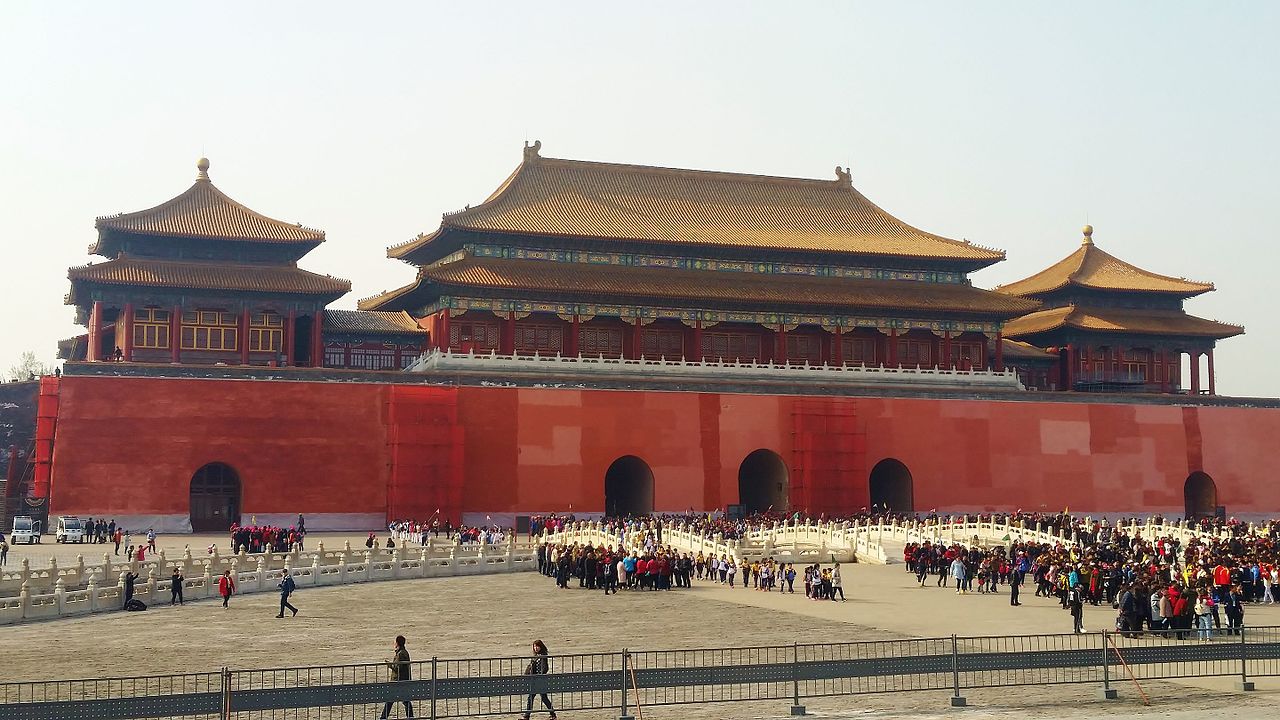The Meridian Gate, also known as Wumen in Chinese, is a grand and imposing structure located at the southern entrance of the Forbidden City in Beijing, China. As one of the most iconic and historically significant landmarks within the palace complex, the Meridian Gate has played a pivotal role in Chinese imperial history and architectural heritage.
Constructed during the early Ming Dynasty (1368-1644 AD) under the supervision of Emperor Yongle, the Meridian Gate was completed in 1420 and served as the main entrance to the Forbidden City, the imperial palace and administrative center of the Chinese empire. Its name, Meridian Gate, originates from the belief that it lies on the north-south axis, known as the meridian line, which was considered the center of the universe in traditional Chinese cosmology.
The Meridian Gate is renowned for its grandeur, symmetry, and intricate architectural details. The structure consists of five central archways, flanked by two slightly smaller archways on either side, creating a sense of balance and harmony. The central archway, known as the “Golden Water Bridge,” was reserved for the exclusive use of the emperor, while the side archways were used by court officials, servants, and visitors to the palace.
The facade of the Meridian Gate is adorned with ornate decorations, including carved wooden beams, painted panels, and glazed ceramic tiles, depicting auspicious symbols, mythical creatures, and imperial insignia. The roof is crowned with a series of upturned eaves, elaborate ridges, and decorative finials, symbolizing the majesty and authority of the imperial court.
Atop the Meridian Gate sits a series of nine ornamental pavilions, known as “Wufenglou” or “Five-Phoenix Towers,” which serve as lookout points and guard stations overlooking Tiananmen Square and the surrounding cityscape. These pavilions are decorated with colorful paintings, intricate carvings, and gilded ornaments, adding to the splendor and magnificence of the gatehouse.
The Meridian Gate played a crucial role in the ceremonial rituals and state functions of the imperial court. It served as the starting point for grand processions, imperial audiences, and official ceremonies, where the emperor would receive foreign dignitaries, issue decrees, and conduct state affairs. The gatehouse thus served as the symbolic and literal threshold between the mundane world and the sacred realm of the emperor, signifying the emperor’s divine mandate to rule over the Chinese empire.
Throughout its history, the Meridian Gate has undergone several renovations and restorations to preserve its architectural integrity and historical significance. Today, it stands as a symbol of China’s imperial past and a testament to the country’s rich cultural heritage and architectural legacy.
In addition to its historical and architectural importance, the Meridian Gate also serves as a popular tourist attraction and cultural landmark in Beijing. Visitors from around the world come to admire its grandeur, explore its ornate interiors, and learn about its role in Chinese history and culture.
In conclusion, the Meridian Gate is a magnificent testament to the grandeur, splendor, and majesty of the Chinese imperial court. With its imposing architecture, intricate design details, and rich historical legacy, it continues to inspire awe and admiration as one of the most iconic symbols of China’s cultural heritage and architectural achievement.

